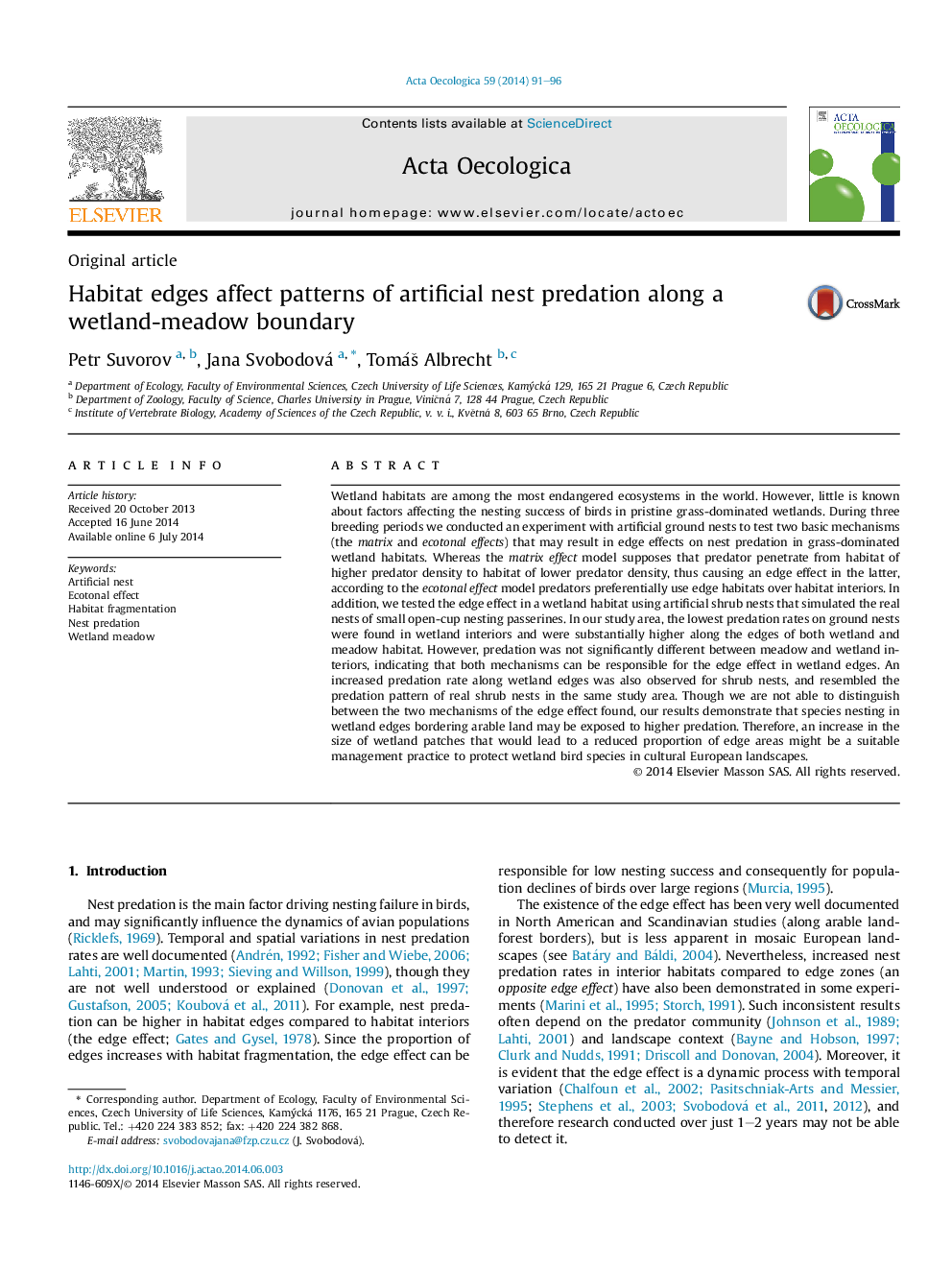| کد مقاله | کد نشریه | سال انتشار | مقاله انگلیسی | نسخه تمام متن |
|---|---|---|---|---|
| 4380992 | 1617712 | 2014 | 6 صفحه PDF | دانلود رایگان |
• We performed an experiment with artificial nests along a wetland-meadow boundary to test the two mechanisms for an edge effect.
• Predation on ground nests was higher in wetland and meadow edges and meadow interiors than in wetland interiors.
• This pattern supports both mechanisms i.e., the ecotonal and matrix effect models.
• Increased predation rate along wetland edges was also observed for shrub nests.
• Species nesting in wetland edges bordering arable land may be exposed to higher predation.
Wetland habitats are among the most endangered ecosystems in the world. However, little is known about factors affecting the nesting success of birds in pristine grass-dominated wetlands. During three breeding periods we conducted an experiment with artificial ground nests to test two basic mechanisms (the matrix and ecotonal effects) that may result in edge effects on nest predation in grass-dominated wetland habitats. Whereas the matrix effect model supposes that predator penetrate from habitat of higher predator density to habitat of lower predator density, thus causing an edge effect in the latter, according to the ecotonal effect model predators preferentially use edge habitats over habitat interiors. In addition, we tested the edge effect in a wetland habitat using artificial shrub nests that simulated the real nests of small open-cup nesting passerines. In our study area, the lowest predation rates on ground nests were found in wetland interiors and were substantially higher along the edges of both wetland and meadow habitat. However, predation was not significantly different between meadow and wetland interiors, indicating that both mechanisms can be responsible for the edge effect in wetland edges. An increased predation rate along wetland edges was also observed for shrub nests, and resembled the predation pattern of real shrub nests in the same study area. Though we are not able to distinguish between the two mechanisms of the edge effect found, our results demonstrate that species nesting in wetland edges bordering arable land may be exposed to higher predation. Therefore, an increase in the size of wetland patches that would lead to a reduced proportion of edge areas might be a suitable management practice to protect wetland bird species in cultural European landscapes.
Journal: Acta Oecologica - Volume 59, August 2014, Pages 91–96
